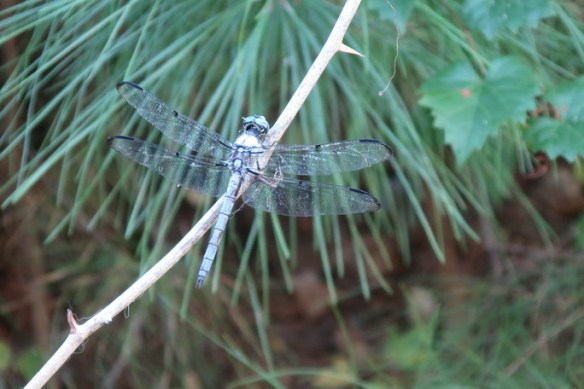A few days ago, I watched the The Big Little Farm – ‘an award-winning documentary about bringing a farm back to life after years of neglect. New farmers, the Chester family, work with nature – not against it – to create a living system with biodiversity where each plant, animal and insect contributes to the health of the land’. I encourage everyone to watch it. It is inspiring, informative, life-affirming and heartwarming.
The basic principles applied in the film are easily implemented in our gardens both public and private. It is how we humans should be cultivating the land. In harmony with nature, maintaining that balance that is so fragile and yet so critical.
The day after I saw the Big Little Farm, I sat a while outside thinking about the film. I could drew a parallel with the evolution of my own garden. When we first bought our property, it was a completely neglected piece of land. The house, built in 1915 was sound and solid. It needed updating but nothing drastic. The garden however, was a total shamble. Left on its own for a few years, it had lost the the battle with the woods in the back which had started encroaching well into the property. We had to measure exactly where the property line was and then started removing all manner of invasive vegetation and debris.
To the side of the property, weeds had quite literally become trees. You couldn’t walk there let alone examine that side of the house. Just out of grad school, we were so naive that we bought the house without really knowing what condition this part was in. After we closed on the house, we had to hire a tree service to remove the “weeds” and open up the space to create a proper path connecting front to back. Mercifully, that side of the house was intact.
In front, there were sickly evergreens right up against the house. They’d grown so tall and gangly that you couldn’t quite see the house. Imagine how dark it felt inside.
Separating us from our neighbors on either side were jungle-like hedges and raggedy shrubs totally gone out of control. In general, we’d inherited a complete mess.
Slowly, we cleared and cut, waited and watched, planned and prepared. I realized I could create garden ‘rooms’ with the different levels that were naturally presented. One squarish area sat atop the old septic tank. This meant that beneath a foot and a half to two feet of soil, was a thick layer of concrete. Nothing with deep roots would do well here. I made it the potager where herbs and vegetables could grow. (The neighbor’s cedar tree was much shorter at that time – it is now huge and casts more shade than I’d like). The fact that I’ve added native wisteria and espaliered pears on two sides of this space is typical of how I’m always pushing the limits.
After the clearing and opening up happened in the front, a charming garden was envisioned. I believe I succeeded and the beds are a happy mix of bulbs and mostly native perennials that have something in bloom through three seasons. It starts off in spring looking colorful and orderly, then gradually gets looser and assertive in the summer and by the fall, it looks rather wild and rambunctious. I like it that way. As do the bees and butterflies.
The meadow in the back was my big push to eliminate all lawn and create a lush area of native plants where native wildlife could thrive and result in an ecosystem that was in balance. This is the most ambitious project in the garden. It’s still evolving but, it is certainly already the busiest area! Birds, bees, butterflies, worms, toads, garden variety snakes and a whole slew of other insects thrive here.
Right from the start, we knew we wanted to practice organic methods and began composting kitchen and garden waste. We also set up a rain barrel to water the garden. We eschewed gas powered mowers and found ourselves a manual push-reel mower that had been put out at the curb for garbage pick-up. This was in the early 1990’s. We knew nobody who was composting or using rain barrels. Gas was cheap and non-organic products were prolific. We were bucking the trend and labeled quaint or hippie-ish. This was amusing to me – I have a strong background in Microbiology and molecular biology. All I’d been doing was applying that knowledge to restore the health of the soil and ecosystem of the land. Straightforward science.
Through old-fashioned research ( pre-Google) and much trial and error, the garden is now a place of biodiversity, beauty and balance. It is a very hardworking garden and tries to serve all life forms well. As small as it is, this garden works big. I’m constantly learning and growing with it. Perhaps most significantly, it stands testament to what each of us blessed with a bit of land (or pots) can do to become a contributing part of the larger effort to keep our planet and ourselves healthy, happy and in harmony.
Note: A bit of what’s doing in the garden this week –
Some images from how the garden used to be. I wish I’d known to take more photos of the ‘Before’.
(c) 2021 Shobha Vanchiswar
[do_widget “Blog Subscriptions (Jetpack)”]



































